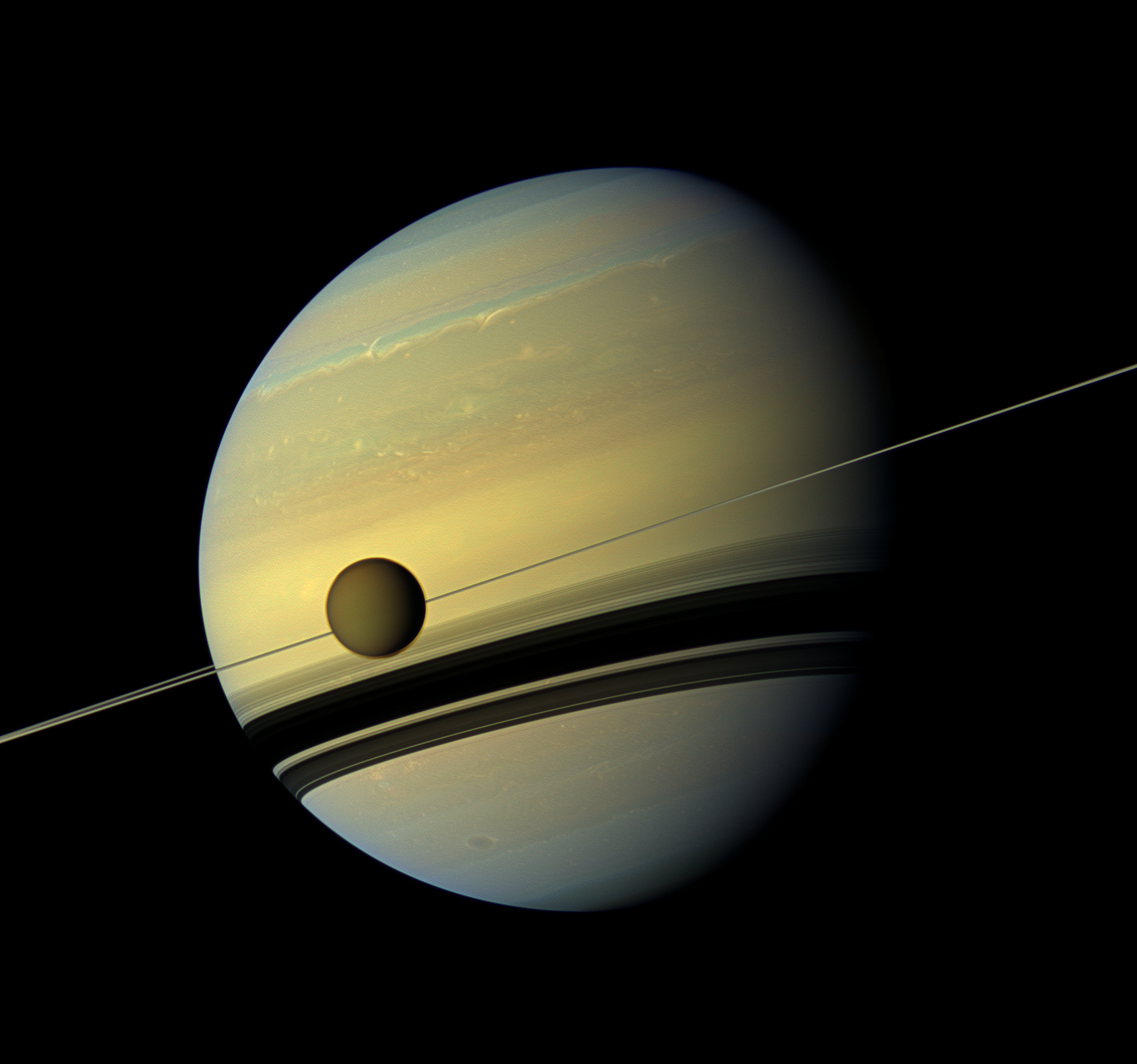Dragonfly’s Journey to Titan
NASA’s newest mission to explore the solar system delivers an 8-bladed rotorcraft to visit Saturn’s largest and richly organic moon, Titan. Slated for launch in 2027 and arrival in 2034, Dragonfly will sample and examine dozens of promising sites around Saturn’s icy moon and advance our search for the building blocks of life.
During its 2.7-year (32-month) baseline mission, Dragonfly will explore Titan’s diverse environments and take advantage of its dense nitrogen-based atmosphere – four times denser than Earth’s – to fly like a drone. The mission marks the first time NASA will fly a multi-rotor vehicle for science on another planet, as well as the first vehicle ever to fly its entire science payload to new places for repeatable and targeted access to surface materials.
Since the basic building blocks of life on Titan are expected to be similar to those on Earth before life arose, Dragonfly’s instruments will help advance astrobiology and study how far pre-life chemistry may have progressed. Additionally, its instruments will investigate the moon’s atmospheric and surface properties, subsurface ocean, liquid reservoirs, and areas where water and complex organic materials key to life once existed together for possibly tens of thousands of years.
Titan is larger than the planet Mercury and is the second largest moon in our solar system. It has a subsurface ocean of liquid water, methane lakes and rivers on the surface, and even clouds and rain of methane. Other more complex organics are formed in the atmosphere and fall like light snow. As it orbits Saturn, Titan is about 886 million miles (1.4 billion km) away from the Sun, about 10 times farther than Earth. Because it is so far from the Sun, its surface temperature is around -290 degrees Fahrenheit (-179 Celsius). Its surface pressure is also 50 percent higher than Earth’s.
Dragonfly was selected as part of the agency’s New Frontiers program, which includes the New Horizons mission to Pluto and the Kuiper Belt, Juno to Jupiter, and OSIRIS-REx to the asteroid Bennu. Dragonfly is led by Principal Investigator Elizabeth Turtle, who is based at the Johns Hopkins Applied Physics Laboratory (APL) in Laurel, Maryland.




























